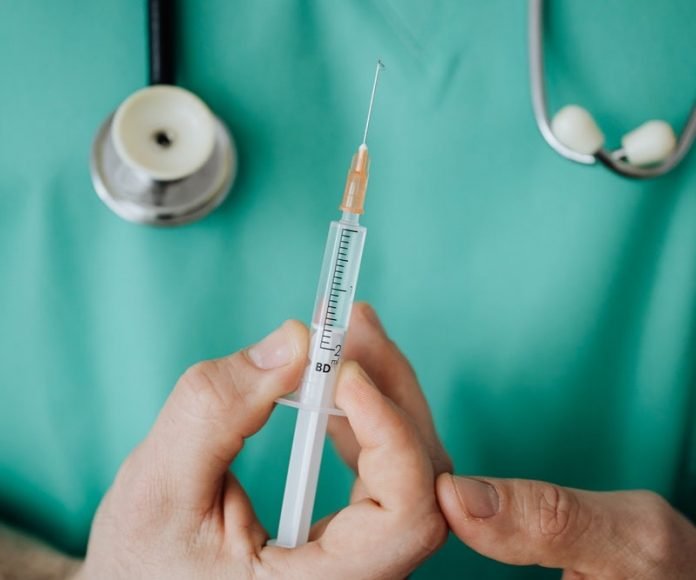
In a new paper, researchers have come to the conclusion that chloroquine (CQ) and hydroxchloroquine (HCQ) are unlikely to provide clinical benefit against COVID-19.
The study is an international collaboration of researchers across more than 80 countries.
The scientists describe multiple recent studies in human Organ Chips and other multi-tissue in vitro models, mice, hamsters, and non-human primates, all of which strongly indicate the drugs do not have the efficacy.
They say the hype around hydroxychloroquine and chloroquine as potential therapies was based on studies that didn’t accurately reflect their effects in humans.
Touting them as ‘wonder drugs’ before they had undergone thorough, systematic evaluation has been extremely detrimental to the fight against COVID-19.
In the paper, researchers working in independent labs around the world highlight multiple studies that all suggest the drugs should never have been considered to be effective treatments.
In February 2020 as the COVID-19 outbreak was gaining speed, the World Health Organization (WHO) convened an ad hoc working group of scientists to encourage open data access, help avoid duplication of effort, and reduce the reliance on animal experimentation in the search for treatments for SARS-CoV-2 infection.
Preliminary studies conducted using cultured Vero cells, which are derived from kidney cells extracted from an African green monkey, suggested that CQ and HCQ could reduce the likelihood or severity of SARS-CoV-2 infection.
However, it is well known that cells grown in a dish, especially from a non-human species, are a poor proxy for the human body.
Mice are regularly used to test potential drugs, but the animals are naturally resistant to SARS-CoV-2; as a result, either the virus needs to be adapted to be more infectious, or the mice’s natural state needs to be changed to allow infection, both of which could compromise the relevance of results obtained from these studies.
Nevertheless, studies demonstrated that when mice were injected with CQ or HCQ, then exposed to a mouse-adapted SARS-CoV strain, lung inflammation in the treated mice was reduced compared to untreated mice.
However, there was no difference in the amount of virus present in their lungs, suggesting that CQ and HCQ did not produce an effective antiviral effect in vivo.
In an effort to provide more accurate data about the drugs’ potential activity in humans than could be obtained from in vitro cells or mice, the team of the new paper oversaw research projects in several different countries that evaluated CQ and HCQ’s anti-SARS-CoV-2 activity in human Organ Chips and other more complex in vitro human tissue models, as well as hamsters and two species of non-human primates.
They found CQ did not strongly inhibit the replication of the SARS-CoV-2 Spike pseudotyped viruses in the lung cells, and more recent findings confirmed that HCQ is ineffective as well.
Meanwhile, in France, a research team developed another complex human in vitro model system called MucilAir, which is derived from primary nasal or bronchial cells differentiated and cultivated under an air/liquid interface.
In alignment with the findings by the Wyss Institute, they concluded that HCQ does not strongly inhibit SARS-CoV-2 infection in their human respiratory tissue model.
Unlike mice, hamsters are naturally susceptible to the SARS-CoV-2 virus, and therefore provide a more accurate rodent model of human infection.
Several studies tested HCQ’s effects in hamsters, either alone or in combination with azithromycin, an antibiotic also purported to treat COVID-19 in humans.
They found that were given HCQ alone did not display a strong reduction in detectable viral RNA in their lungs, and hamsters that were given HCQ with azithromycin displayed a 3-fold increase in viral RNA.
Testing drugs in non-human primates is a big step closer to testing them in humans, and two groups evaluated the effect of HCQ on SARS-CoV-2 infection in two different primate species.
One group studied cynomolgus macaques and found no strong anti-viral or clinical benefit of HCQ when given prophylactically or after infection, at several different doses, and with or without azithromycin.
The viral loads in the animals’ respiratory tract, lesions observed by chest CT scan, and clinical signs were comparable in the treated vs. untreated groups.
Another group conducted similar studies in rhesus macaques and found that animals in HCQ-treated and control groups developed similar mild to moderate disease both when HCQ was given prophylactically and after infection, and showed similar SARS-CoV-2 replication and shedding in their lower and upper respiratory tracts.
The findings show that studies in different models produced the same results, suggesting really convincing evidence that these drugs are very unlikely to be effective in humans.
The team says researchers should invest their time and energy into exploring other options.
One author of the study is Wyss Founding Director Donald Ingber, M.D., Ph.D.
The study is published in Nature Communications.
Copyright © 2020 Knowridge Science Report. All rights reserved.



